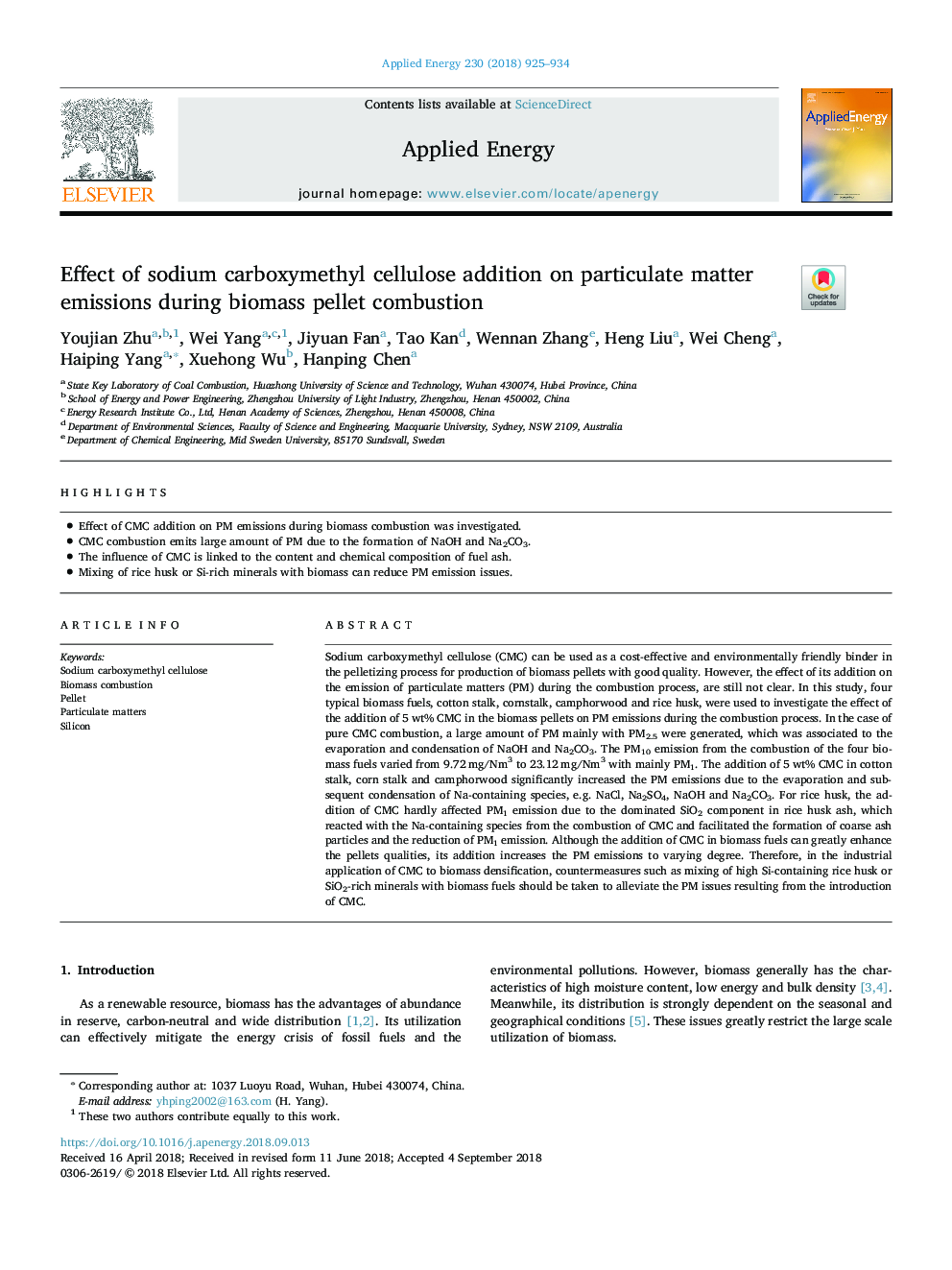| Article ID | Journal | Published Year | Pages | File Type |
|---|---|---|---|---|
| 10131431 | Applied Energy | 2018 | 10 Pages |
Abstract
Sodium carboxymethyl cellulose (CMC) can be used as a cost-effective and environmentally friendly binder in the pelletizing process for production of biomass pellets with good quality. However, the effect of its addition on the emission of particulate matters (PM) during the combustion process, are still not clear. In this study, four typical biomass fuels, cotton stalk, cornstalk, camphorwood and rice husk, were used to investigate the effect of the addition of 5â¯wt% CMC in the biomass pellets on PM emissions during the combustion process. In the case of pure CMC combustion, a large amount of PM mainly with PM2.5 were generated, which was associated to the evaporation and condensation of NaOH and Na2CO3. The PM10 emission from the combustion of the four biomass fuels varied from 9.72â¯mg/Nm3 to 23.12â¯mg/Nm3 with mainly PM1. The addition of 5â¯wt% CMC in cotton stalk, corn stalk and camphorwood significantly increased the PM emissions due to the evaporation and subsequent condensation of Na-containing species, e.g. NaCl, Na2SO4, NaOH and Na2CO3. For rice husk, the addition of CMC hardly affected PM1 emission due to the dominated SiO2 component in rice husk ash, which reacted with the Na-containing species from the combustion of CMC and facilitated the formation of coarse ash particles and the reduction of PM1 emission. Although the addition of CMC in biomass fuels can greatly enhance the pellets qualities, its addition increases the PM emissions to varying degree. Therefore, in the industrial application of CMC to biomass densification, countermeasures such as mixing of high Si-containing rice husk or SiO2-rich minerals with biomass fuels should be taken to alleviate the PM issues resulting from the introduction of CMC.
Related Topics
Physical Sciences and Engineering
Energy
Energy Engineering and Power Technology
Authors
Youjian Zhu, Wei Yang, Jiyuan Fan, Tao Kan, Wennan Zhang, Heng Liu, Wei Cheng, Haiping Yang, Xuehong Wu, Hanping Chen,
